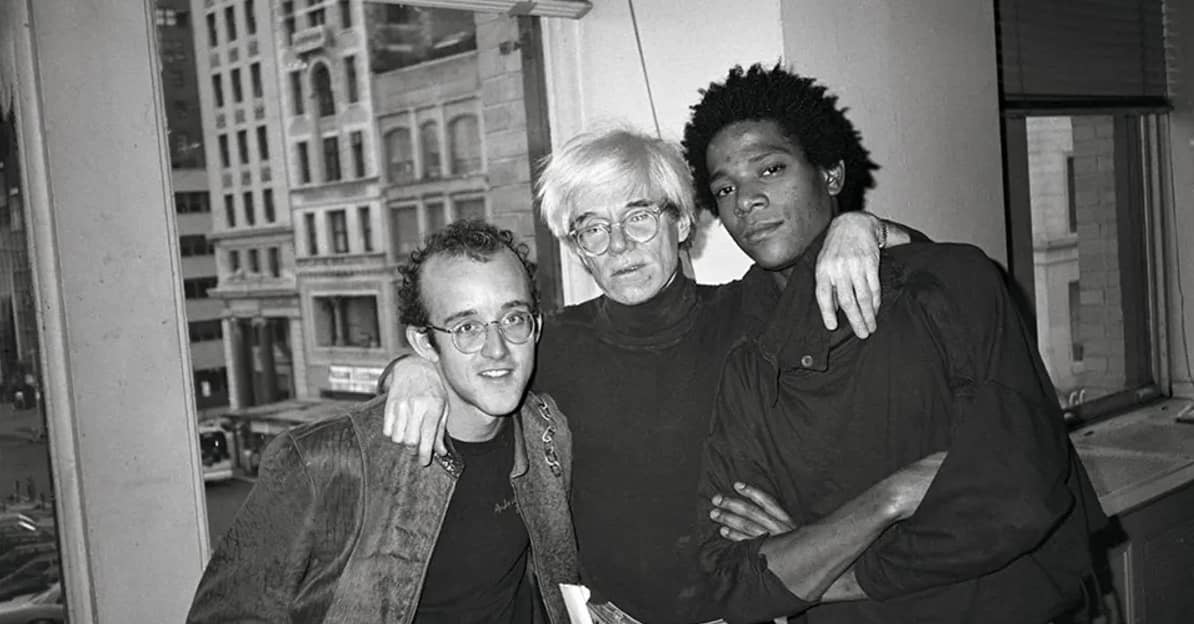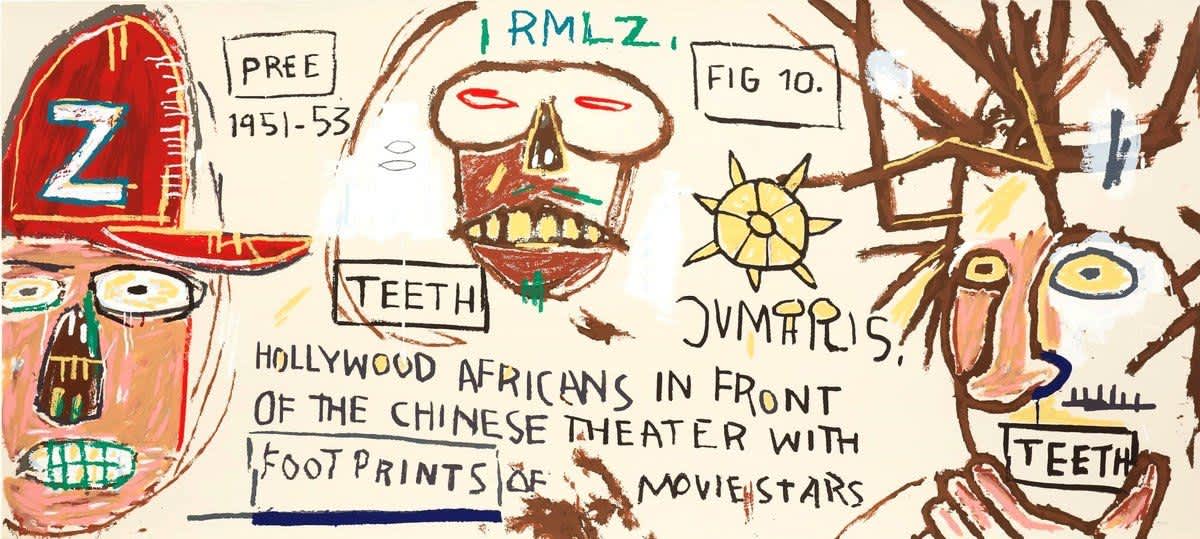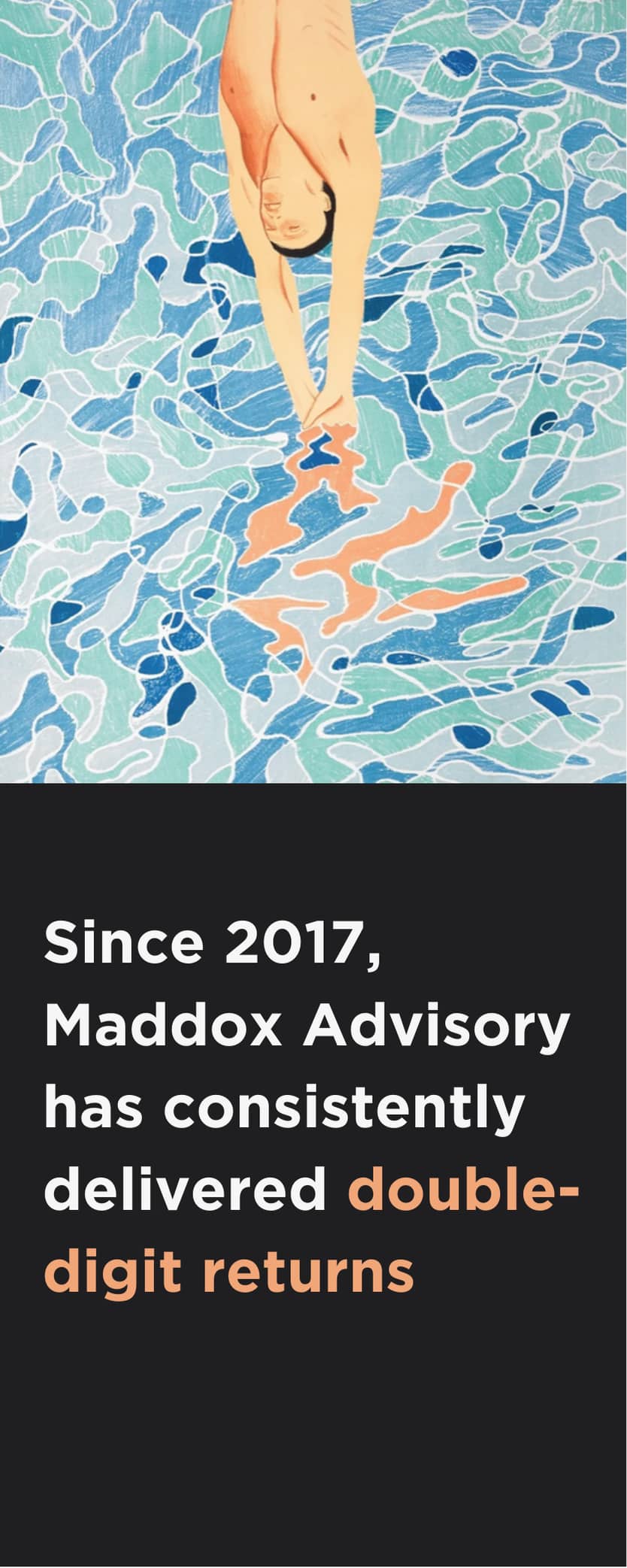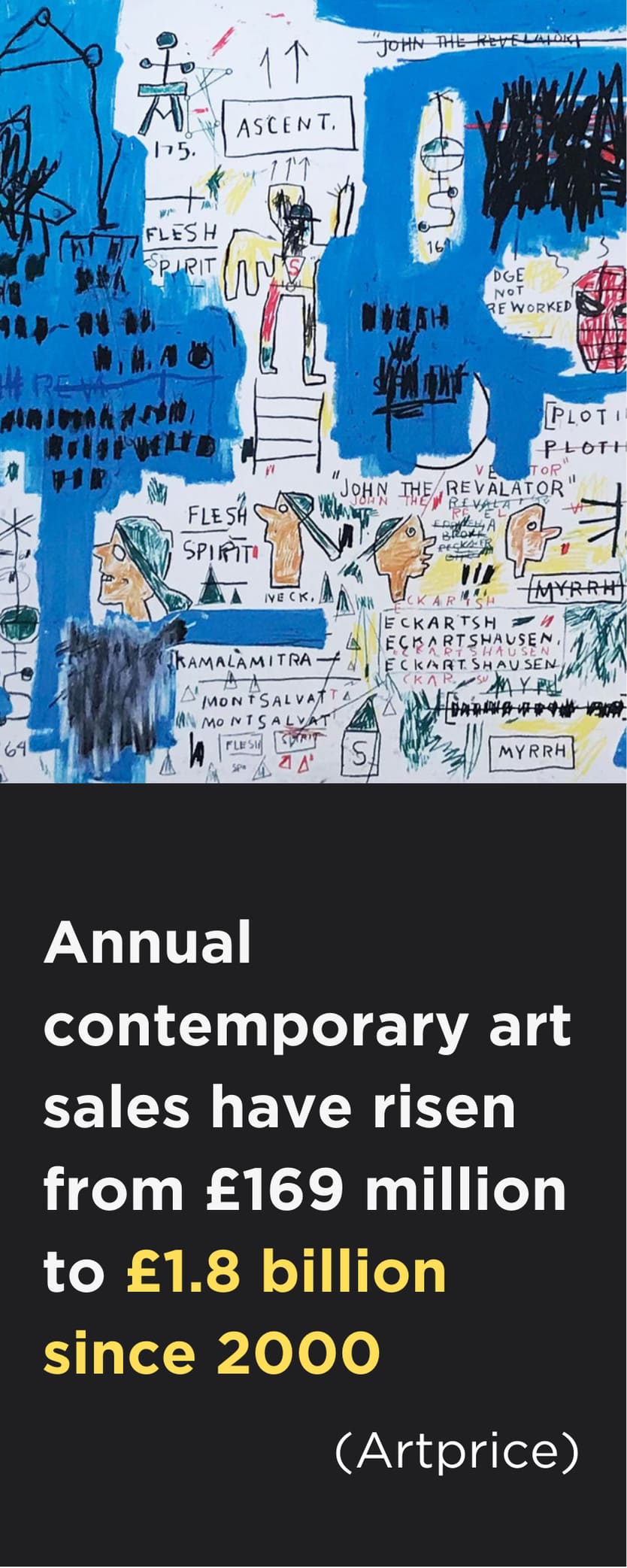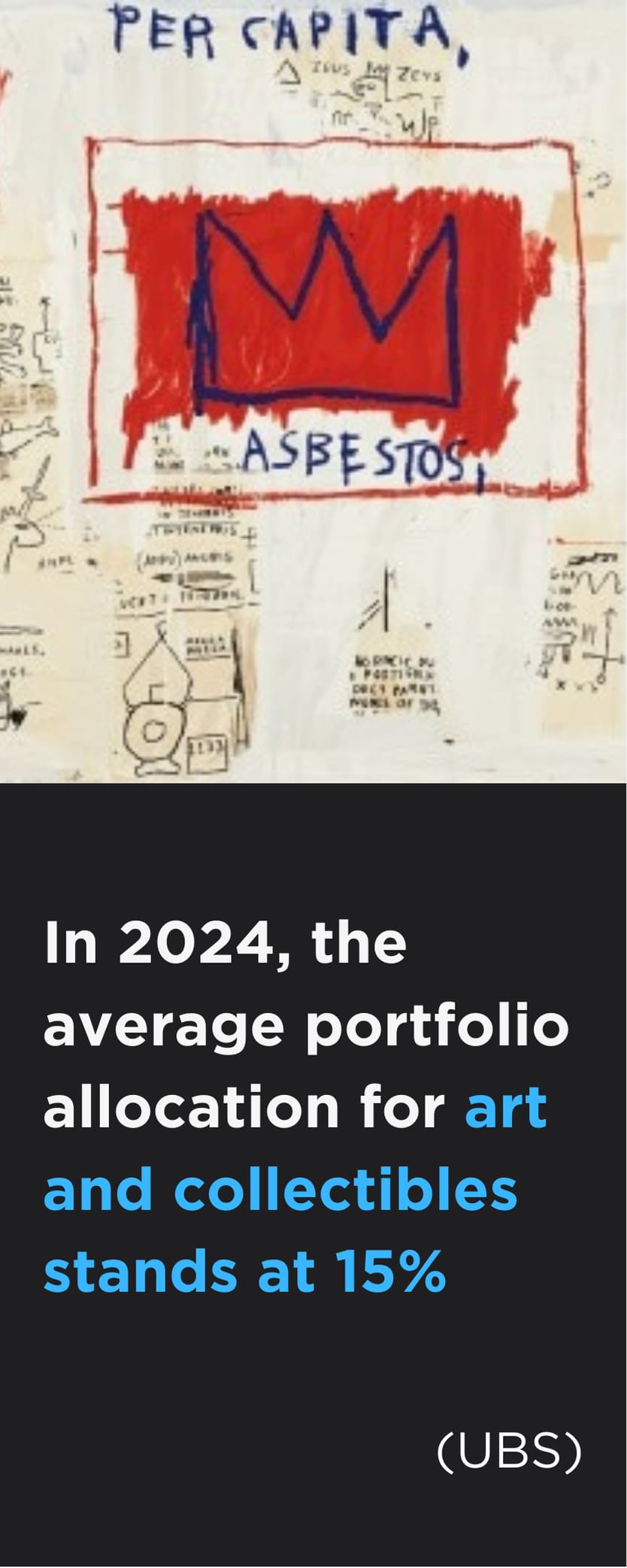By the late 1960s, New York had become the epicentre of the art world, with the emerging Pop Art movement publicising the city as a global hub for artists. Creatives travelled from all over the world to live and work in New York and, by the 1980s, it was a hotbed of creativity, producing artistic geniuses such as Jean-Michel Basquiat and Keith Haring. New York was also home to a host of other artists who went on to have celebrated careers, including Jeff Koons, Kenny Scharf and Richard Prince, and gave birth to street art, one of the most influential 1980s art movements that remains hugely popular today.
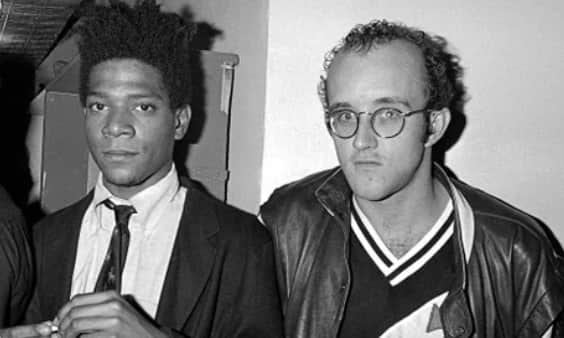
The seeds of the artistic zeitgeist that was 1980s New York were sown by the socio-political and cultural environment in the city. As a result of Ronald Reagan’s presidency and the plethora of anti-tax policies introduced during his tenure, the economy of 1980s New York was booming. However, despite the rise in wealth across the city, New York was increasingly subject to many silent terrors, including an intensifying wealth gap, the emergence of AIDS, the crack epidemic and the escalating tensions of the Cold War. The people of New York were demanding social change, and many artists began using their work as a call to action.
The artists birthed in this period of social turmoil can be categorised by their vernacular style. From Keith Haring advocating for safe sex to help stop the spread of AIDS to Basquiat’s confrontation of racism and police brutality, they were art activists just as much as they were creatives, making art for the people. Without the support of traditional art institutions, many of whom had no interest in supporting their activist pursuits, the artists of the time were forced to create their own show spaces. As a result, many galleries emerged within the East Village, including FUN, Gracie Mansion and ABC No Rio, and they enjoyed great success.
New York was a maelstrom of subcultures and the global epicentre of graffiti, which had a profound effect on the 1980s artist-painters working in the city. Jean-Michel Basquiat and Keith Haring launched their careers through street art, and both were influenced by the plethora of groups and scenes that were thriving in their home city. From hip hop to an increasingly prominent LGBTQ+ community, the freedom of expression that these groups encouraged undoubtedly fuelled the creativity of the city as a whole. In turn, the intersection of these subgroups produced combinations of styles and genres that had never been seen before.
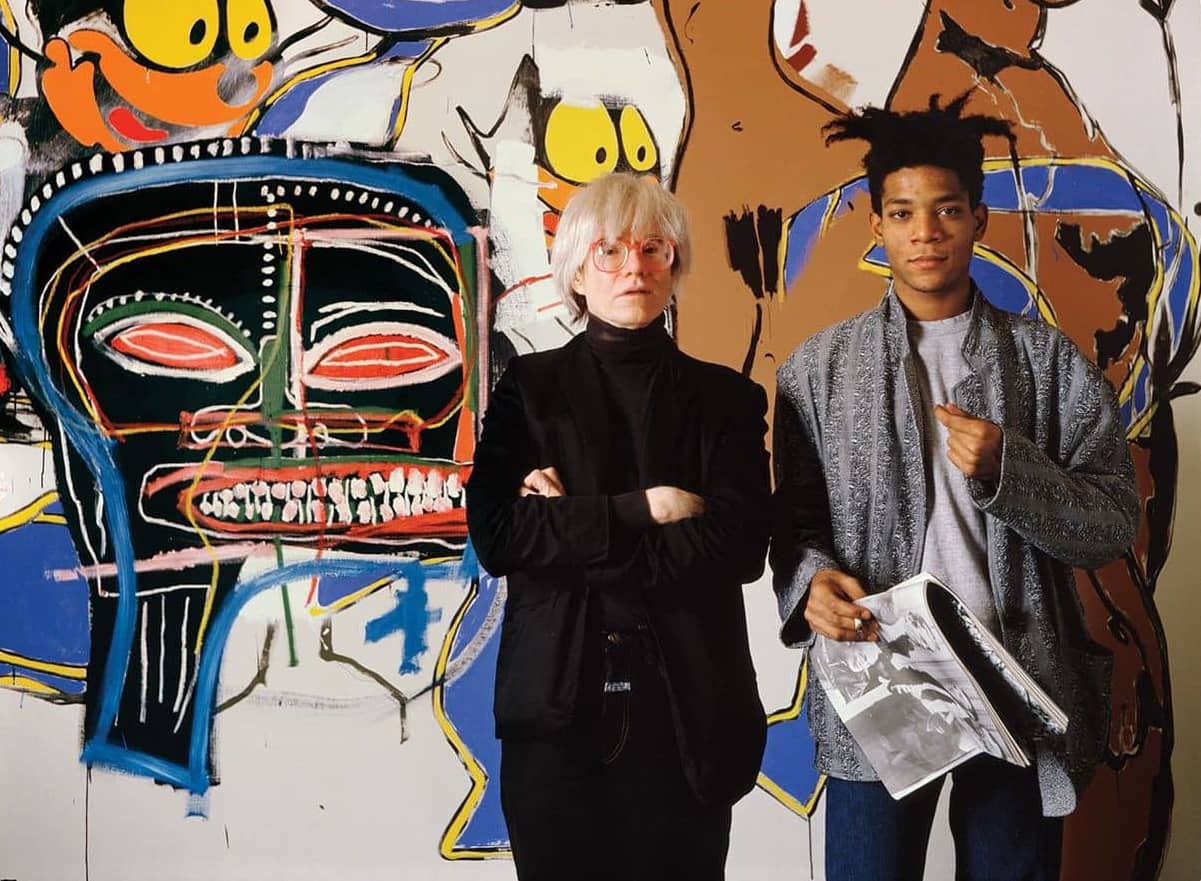
The city also became a thriving hub of collaborative artistic activity. In the years 1984 and 1985, Jean-Michel Basquiat and Andy Warhol created over 200 artworks together, everything from collages to full-scale paintings. Keith Haring also worked collectively with Basquiat and Warhol, with the trio often visiting each other’s studios and offering creative advice. This sense of collaboration was present for many other artists of the time, with Jeff Koons reportedly commenting that artists “were able to go through the development of what it means to be of a certain generation of a city and developing ideas together. Our [art]work is a product of collaboration, of sharing ideas, of sitting around and drinking beer.”
The 1980s in New York was also the era in which art became enmeshed with celebrity. The Pop Art movement of the 1960s simultaneously challenged the idea of celebrity culture whilst establishing a new form of celebrity: the artist. Many artists of the time became staples on the social scene, rubbing shoulders with movie stars and musicians in Studio 54, dating Hollywood royalty and cosying up to politicians.
There was an unprecedented sense of spectacle surrounding these artists, with a new term coined to label the phenomenon: “art star”. Catapulted into the realm of celebrity, an artist’s work became sanctified and protected from scrutiny, aiding the smooth passage of the artist’s journey to stardom. However, for some artists during this time, like Basquiat, this overnight fame was coupled with an unsustainable lifestyle fuelled by drugs and partying. This led to the very factors that immortalised them bringing their life to an untimely end.
Feature Artist #1 Jean-Michel Basquiat
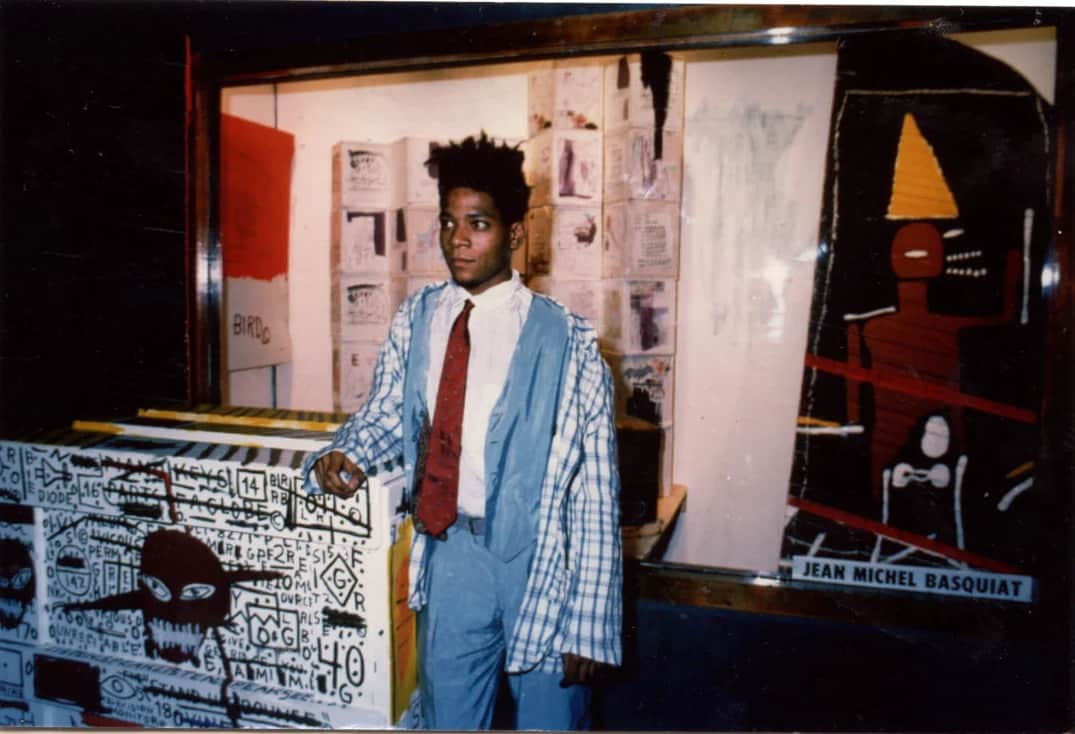
Basquiat’s 1980s artworks were inspired by his graffiti roots but also heavily influenced by his African, Latino and American identity and the race politics of America at the time. As one of very few black artists on the New York art circuit, Basquiat was constantly reminded of the colour of his skin. As a result, his work can be seen as an expressive fusion of these factors, with the artist exploring what it meant to live in a city that is home to so many different ethnicities and cultures.
Born to Haitian and Puerto Rican parents in Brooklyn, Basquiat first gained notoriety in the late 1970s as part of the graffiti duo Samo, shorthand for “same old shit”, with his friend Al Diaz. Back when graffiti was still considered an act of vandalism, Basquiat’s street art was different, with his poetic and politically provocative slogans an early introduction to his clever use of word play.
Living on the street and crashing with friends when he could, Basquiat’s lucky break came when he curated the avant-garde art exhibition ‘The Times Square Show’ with Keith Haring, among others. With his talent acknowledged by the art critic and Metropolitan curator Henry Geldzahler, the art world began to take notice of this rebellious, born-and-bred New York artist.
Basquiat’s star burned brightly, but was short-lived. Immersed in the hedonism of the city’s nightclub scene in the 1980s, the artist struggled with drug addiction. In 1988, he died of a heroin overdose, aged just 27. Despite his tragically short life, his creative output was prolific, with the artist amassing an oeuvre of around 1,000 paintings and 2,000 drawings.
Feature Artist #2 Keith Haring
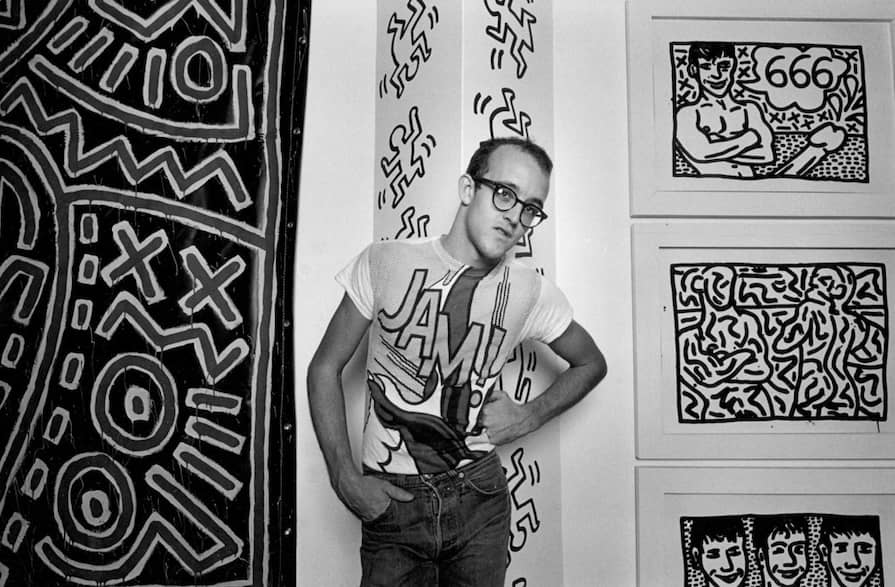
Like Basquiat, Keith Haring also came from a marginalised community. Graffiti formed the basis of his work, but as a young, gay man, it also spoke of the troubles of the LGBTQ+ community.
In 1980s New York, graffiti was undergoing a seismic shift from an illegal form of vandalism to a valid art form, with Haring leading the way with his bold visual language and belief that art should be accessible to all. Through his democratic art practice, he talked about the important social issues that were frequently brushed under the carpet: AIDS and LGBTQ+ rights but also environmentalism, drug abuse and racial inequality.
Crucially, he used a language that was not only accessible, it was also visible. In 1986, he created his iconic ‘Crack Is Wack’ mural in East Harlem. Painted on the wall of a handball court, it remains in the same location today, refurbished and restored, its message just as powerful, some 40 years later.
In 1986, Haring set up his Pop Shop on Lafayette Street, a store selling art, clothes, posters and drawings, created by the artist and his peers, at affordable prices. An artwork in itself, Haring’s iconography was everywhere, including the floor-to-ceiling murals.
Testing positive for HIV in 1987 and eventually dying of AIDS-related illnesses in 1990, Haring’s life was forever shaped by the AIDS epidemic, a struggle that was continually referenced in his work. As one of the formative visual artists of his era, Keith Haring’s influence reached far and wide. He packed so much life, creativity and heart into his 31 short years, and nobody personified New York 1980s culture with quite the same degree of verve and generosity.
Feature Artist #3 Jeff Koons
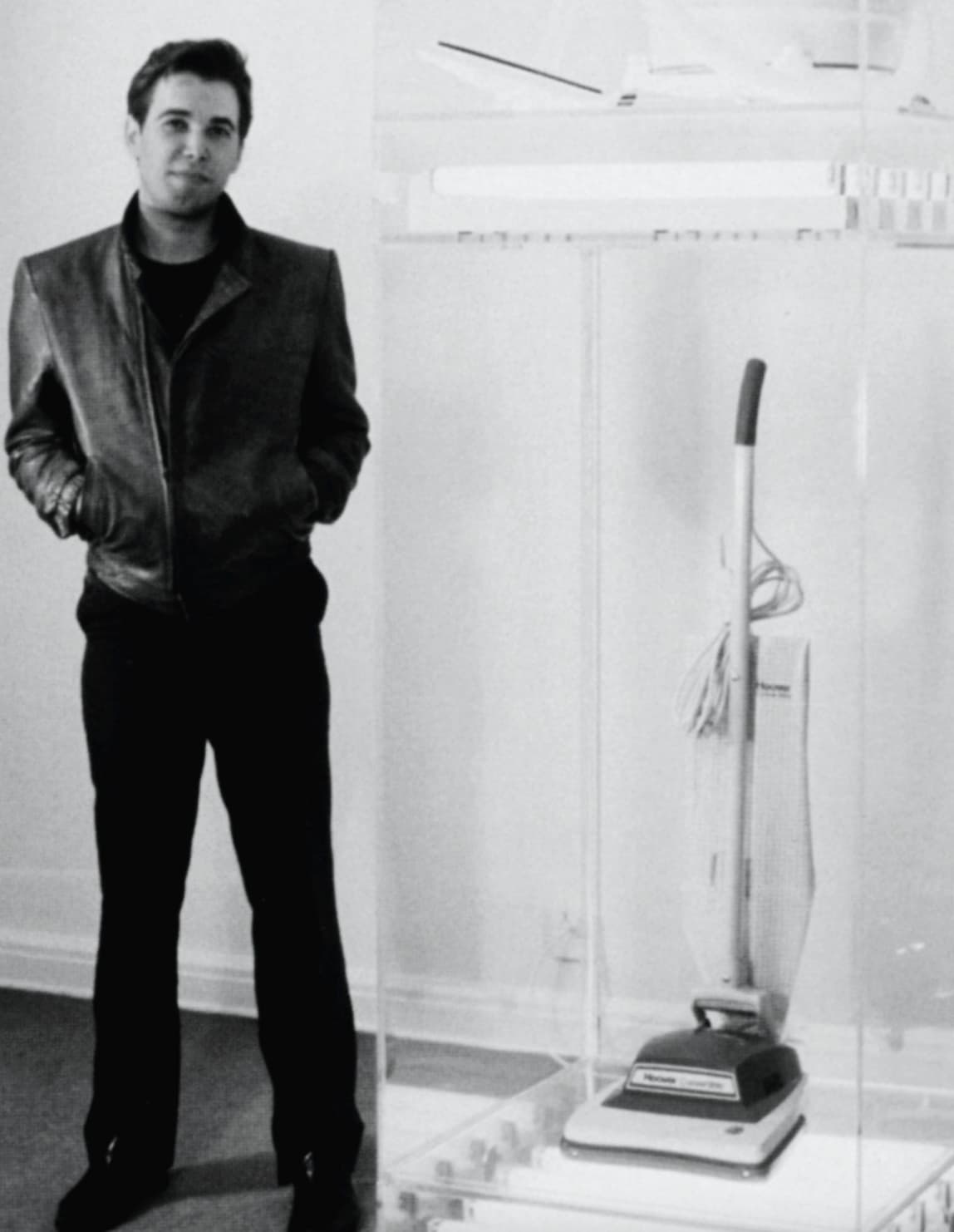
Jeff Koons kicked off the decade in New York with his first solo exhibition in the window of the New Museum of Contemporary Art in 1980, titled ‘The New’. The series of sculptures included a work composed entirely of fresh-out-the-box vacuum cleaners, showcased in a pristine, fluorescent-lit plexiglass vitrine, questioning the glorification of consumer objects and people’s obsession with cleanliness.
Koons moved to New York from Chicago at the end of 1976 and got his first job selling tickets at the Museum of Modern Art. “I thought, when I move to New York, I’d like to work in a museum,” he said during a conversation with the artist George Condo as part of ‘Who’s Afraid of the New Now? 40 Artists in Dialogue to Celebrate the New Museum’s Anniversary’ in 2017. “That was my first job and I loved it because I was really able to dive into my own interests. The architectural design department had a very large influence on me. I don’t think I’d have ever made works like ‘The New’ if I hadn’t been looking at some of the objects they were displaying.”
In the 1980s, New York’s East Village was the city’s creative epicentre. It attracted a young generation of artists who came together to discuss ideas about what art could be. Energised by the artistic community he was part of, Koons was inspired to create works like the stainless-steel sculpture Bunny in 1986. From the ‘Statuary’ series, the faceless bunny stood at just over 3-foot high and turned a cute symbol of childhood into a futuristic icon, seductive and aloof.
Bunny was instrumental in establishing Koons’ signature style of polished, reflective surfaces and gaining Koons international recognition. It also paved the way for his ‘Balloon Dog’ series, a series of playful sculptures, made between 1994 and 2000, that are among the most iconic works of Contemporary art.
Other Influential Artists in 1980s New York
Any reference to famous 80s New York artists isn’t complete without mentioning the familiar figure who was at the centre of it all: Andy Warhol. A celebrated name in the art world who was at the heart of social and artistic life in the city, he was considered a guru by the young creatives who were just finding their artistic voice in New York. One of the first to recognise Keith Haring's talent, Warhol went on to serve as a mentor to the artist, and he also took Basquiat under his wing, igniting a close friendship that led to a joint show in 1985 that is considered one of the most important collaborations of the last century.
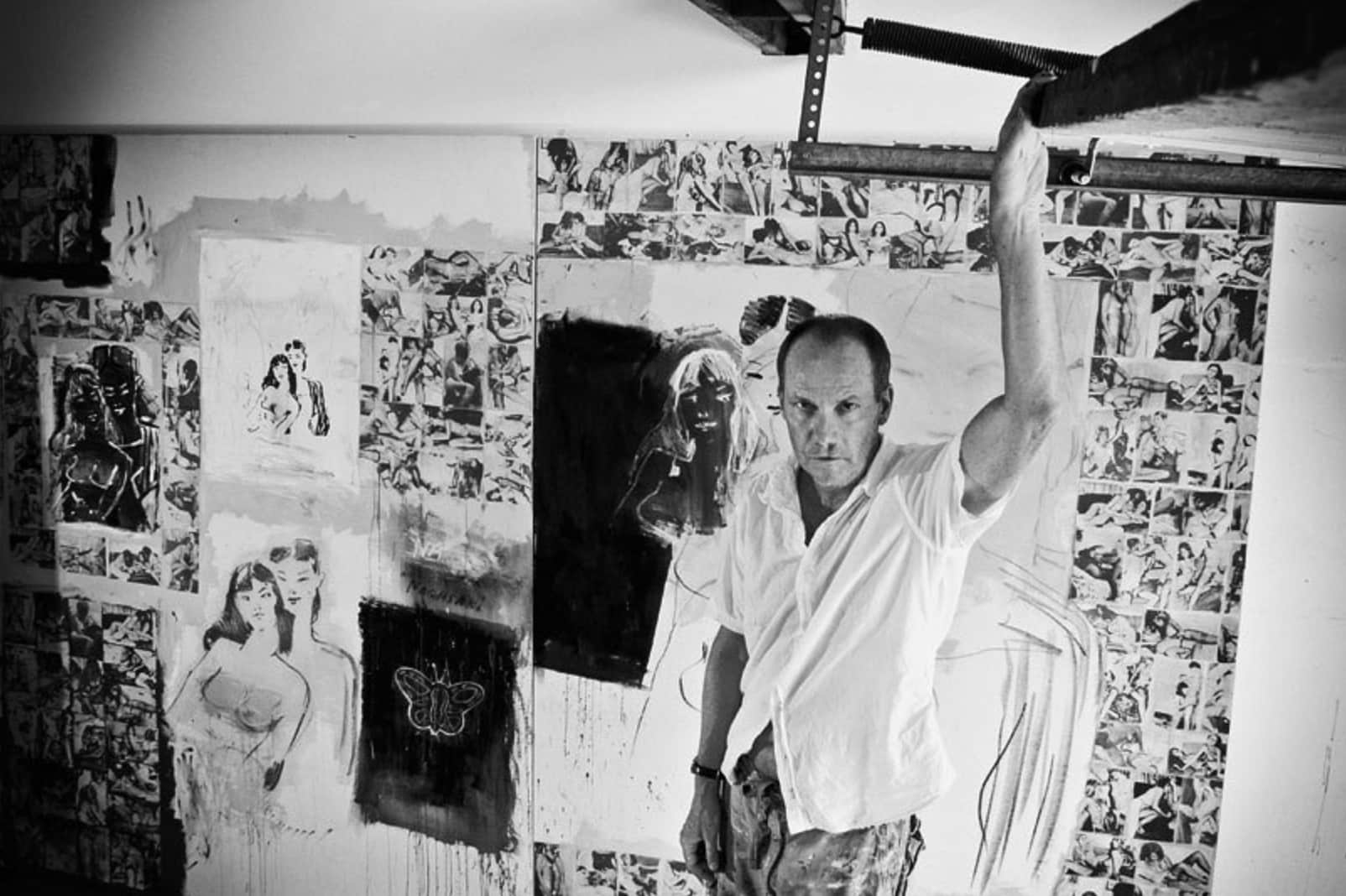
© Gordon M. Grant
A pivotal figure in the 1980s art scene in NYC, Richard Prince played a key role in the evolution of Contemporary art through his rephotographing of existing images from advertisements in magazines. With his innovative approach to appropriation, Prince’s work became synonymous with the Pop Art artists of the era’s critical exploration of originality, authorship and the mass media’s influence on culture. Prince’s seminal series ‘Cowboys’, created between 1980 and 1992, rephotographed Marlboro cigarette ads, stripping them of their original context to question just how realistic the commercial depiction of a macho man on a horse was. ‘Cowboys’ went on to become emblematic of the 1980s art scene's fascination with media culture and the constructed nature of identity.
Other iconic artists that made up the cultural melting pot of creatives in 1980s New York included Canadian street artist Richard Hambleton, Julian Schnabel, who created his famous “plate paintings” in 1984, the photographer Robert Mapplethorpe and the street artist, whose haunting silhouettes began mysteriously appearing on buildings in Manhattan in the early 1980s.
Iconic and Valuable Prints of 1980s Artworks
Prints of Jean-Michel Basquiat’s iconic paintings, such as Hollywood Africans (1983), 50 Cent Piece (1983) and Boxer Rebellion (1982-3), are enormously collectible. A commentary on race, culture and the African American experience in Hollywood, the screenprint of Hollywood Africans, posthumously published by the artist’s estate in 2015, is one of Basquiat's most important prints, with recent auction prices ranging from $200,000 to over $1 million. Symbolising resistance and struggle, a recurring theme in Basquiat’s work, sales of his Boxer Rebellion print, an edition of 60, consistently reach upwards of $500,000, with prices for 50 Cent Piece ranging from $150,000 to $400,000.
Keith Haring’s silkscreen print Retrospect, created towards the end of the decade, in 1989, is one of his best-known prints. A collage of his iconic figures and symbols, it is an homage to his earlier works and remains popular among collectors, typically selling for between $100,000 and $300,000. Andy Mouse (1986) is also very collectible, with recent auction sales achieving between $200,000 and $600,000. A tribute to Andy Warhol, it merges Haring’s style with Warhol's influence, making it highly significant in Pop Art circles.
One of Jeff Koons’ most famous, and valuable, artworks, Balloon Dog was created in 1995 but is rooted in the Pop Art sensibilities of 1980s New York. While larger sculptures command millions, prints and smaller versions of his ‘Balloon Animals’ series are prized among collectors, with smaller prints and editions selling for between $50,000 and $200,000.
Two years before his death in 1987, New York stalwart Andy Warhol created his iconic series of silkscreen portraits of four female rulers who were on the throne at the time. Based on a photograph from the 1977 Silver Jubilee, his Pop Art portrayal of Queen Elizabeth II is the most acclaimed, and valuable. With four colour variants created of this iconic work, prints of Warhol’s Queen Elizabeth II of the United Kingdom have recently fetched between $500,000 and over $1 million, depending on the condition and edition number.
